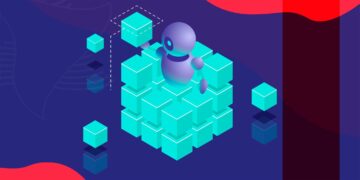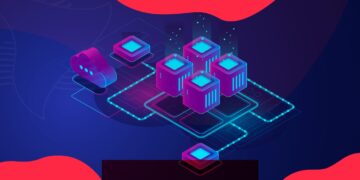First, to optimise your time, if you are thinking: “Is hyperautomation for me? Should I continue to read?”
I will answer with another question (I know this isn’t right, but you will get it). Do you have repetitive, time-consuming, error-prone processes and tasks that slow you down and affect your efficiency? If so, then YES, Hyperautomation is for you!
Get to know the table of content for this article:
- What is Hyperautomation
- Benefits of Hyperautomation
- Hyperautomation uses cases
- Data-driven decisions
- Integration Strategy
- Hyperautomation with Salesforce and MuleSoft
- Closing notes
1. What is Hyperautomation
Hyperautomation is a term used to describe the integration and use of advanced technologies, such as artificial intelligence (AI), robotic process automation (RPA), and machine learning (ML), to automate business processes.
It’s a step beyond traditional automation, supported by AI and ML algorithms, to automate repetitive, manual tasks. Using these technologies also enables faster reshaping to change business conditions. And make it an ideal solution for organisations that need to automate complex processes.
Hyperautomation solutions are typically integrated with existing systems, such as enterprise resource planning (ERP) and customer relationship management (CRM) platforms. That provides a unified view of data and automates end-to-end business processes.
2. Benefits of Hyperautomation
In a nutshell, the benefits of Hyperautomation include:
- Increased efficiency: Automate repetitive and time-consuming tasks, freeing up employees to focus on more strategic and creative work.
- Improved accuracy: Perform tasks more accurately and consistently, reducing the risk of errors and improving overall quality.
- Increased speed: Perform tasks faster, improving productivity and enabling organisations to respond to customer needs more quickly.
- Cost savings: By automating processes, organisations can increase operational efficiency, resulting in cost savings.
The result is a highly automated and efficient process that reduces the risk of errors, improves accuracy, and increases speed. By automating manual tasks, organisations can free up their employees to focus on more strategic and creative work. That will respond to customer needs more quickly and effectively.
3. Hyperautomation uses cases
Hyperautomation uses cases can be found in a variety of industries. To name a few:
- Banking and Financial Services: Banks and financial institutions can automate tasks such as loan processing, fraud detection, and account reconciliation. By automating these processes, banks can improve accuracy and efficiency while reducing the risk of errors.
- Healthcare: Healthcare organisations automate tasks such as appointment scheduling, medical record management, and patient data analysis. This can improve the quality of care and reduce wait times for patients.
- Retail: Retail companies can automate tasks such as inventory management, supply chain optimisation, and customer service. This can improve the customer experience and increase operational efficiency.
- Telco: Telecommunication companies can automate routine customer services tasks, such as account setup and billing inquiries, optimise their network operations or detect fraudulent activities and suspicious behaviour.
4. Data-driven decisions
And did you know that Hyperautomation can help your data-driven decision-making?
By automating data collection from multiple sources, analysis, and reporting, organisations can gain deeper insights into their operations and make more informed decisions.
Hyperautomation solutions include AI and ML algorithms to analyse data and identify patterns and trends that can be complex for humans to detect. This can help organisations make more accurate predictions, identify opportunities for improvement, and make data-driven decisions.
Integrating with AI and ML solutions powers the underlying potential of hyperautomation:
- Natural Language Processing (NLP): NLP is a form of AI that allows machines to understand, interpret, and respond to human language. NLP can be used in hyperautomation to automate customer service and support processes, such as chatbots, and improve the customer experience.
- Predictive Analytics: Predictive analytics is a form of machine learning that uses statistical models and algorithms to analyse data and make predictions. Predictive analytics can be used in hyperautomation to predict future trends, identify opportunities for improvement, and make data-driven decisions.
- Deep Learning: Deep learning is a form of machine learning that uses neural networks to automate complex processes and make predictions. Deep learning can be used in hyperautomation to automate processes such as image recognition, speech recognition, and natural language processing.
- Reinforcement Learning: Reinforcement learning is a form of machine learning that enables machines to learn by trial and error. Reinforcement learning can be used in hyperautomation to automate decision-making processes, such as supply chain optimisation, and improve outcomes.
- Computer Vision: Computer vision is a form of AI that enables machines to recognise and analyse images and videos. Computer vision can be used in hyperautomation to automate visual inspection processes, such as quality control, and improve accuracy.
For example, a company could leverage hyperautomation to analyse sales data and anticipate future trends. By automating the process of collecting and analysing data, the company can quickly identify opportunities for growth and make data-driven decisions that drive business success.
5. Integration Strategy
For a successful hyperautomation implementation, organisations must have a clear, comprehensive, and effective integration strategy. This involves understanding the various systems and data sources that need to be integrated, identifying the processes that need to be automated, and determining the most appropriate tools and technologies.
This integration strategy should consider some architectural principles like:
- Data Integration: Hyperautomation solutions should be integrated with existing data sources, such as ERP and CRM systems, to provide a unified view of data and automate end-to-end business processes.
- API-led Connectivity: Organisations should use API-led connectivity to integrate hyperautomation solutions with other systems. APIs allow data and processes to be securely shared between systems, enabling seamless integration and automation.
- Cloud-based Architecture: Hyperautomation solutions can take advantage of the scalability and flexibility of the cloud. Cloud-based solutions can also be easily integrated with other cloud-based systems, making integration straightforward and more cost-effective.
Examples of integrated systems or solutions to achieve the full potential of hyperautomation:
- ERP Systems: Hyperautomation solutions should be integrated with ERP systems to automate back-office processes and provide a unified view of data.
- CRM Systems: Integration with CRM systems is essential for automating customer-facing processes and improving the customer experience.
- RPA Solutions: Robotic process automation (RPA) solutions can be integrated to automate repetitive manual tasks and improve efficiency.
- AI and Machine Learning Solutions: AI and machine learning solutions can be integrated to provide advanced analytics and automate complex processes, including technologies such as cognitive learning, Optical Character Recognition (OCR), and natural language processing (NLP).
- Low-code/no-code solutions: Simplify the automation process using tools with a graphical user interface for configuration, requiring less technical expertise and faster deployment.
It is also important to consider the potential impact of hyperautomation on the workforce, including the skills and training required for employees to work with new technologies. A well-designed integration strategy should take these factors into account and provide a clear plan for transitioning to a hyperautomated environment.
6. Hyperautomation with Salesforce and MuleSoft
Salesforce and MuleSoft are powerful platforms organisations can use to achieve hyperautomation.
With its cloud-based architecture, Salesforce can integrate with various other systems and provide access to a wide range of data, making it an ideal platform for hyperautomation. Using Salesforce’s platform and tools, organisations can automate processes such as lead scoring, lead nurturing, and customer service, among others.
MuleSoft, on the other hand, is an integration platform that allows organisations to connect and manage the flow of data between different systems. This makes it an essential tool for hyperautomation as it provides a centralised and unified way to manage and automate complex processes. Furthermore, MuleSoft can be used to integrate Salesforce with other systems, such as ERP and Billing systems, enabling organisations to automate end-to-end business processes.
And with MuleSoft Automation, you can enable every team across your organisation to automate – from IT to finance to service to ops.
MuleSoft’s complete suite of tools – Anypoint Platform, Composer, and RPA – enables business teams to easily automate across all their systems and data – with oversight and governance provided by IT.
7. Closing notes
Hyperautomation is a disciplined, business-driven approach to traditional business process automation. Thus, it aims to automate as many businesses and IT processes as possible by combining the capabilities of multiple tools and technologies such as RPA, AI, and ML. These tools enable scalability, business model disruption, and remote operation.
Every business has opportunities to streamline operations, increase efficiency, and drive growth. At Stellaxius, we are passionate about helping organisations achieve their goals. Our team can help you identify your automation opportunities, develop a strategy, and implement the solutions that will take your business to the next level.
Get in touch with us today to learn more about how we can help you realise your full potential. Let’s work together to shape your future!
You can also look for more information about how Mulesoft can help in your digital transformation. And subscribe to our Knowledge Center.






